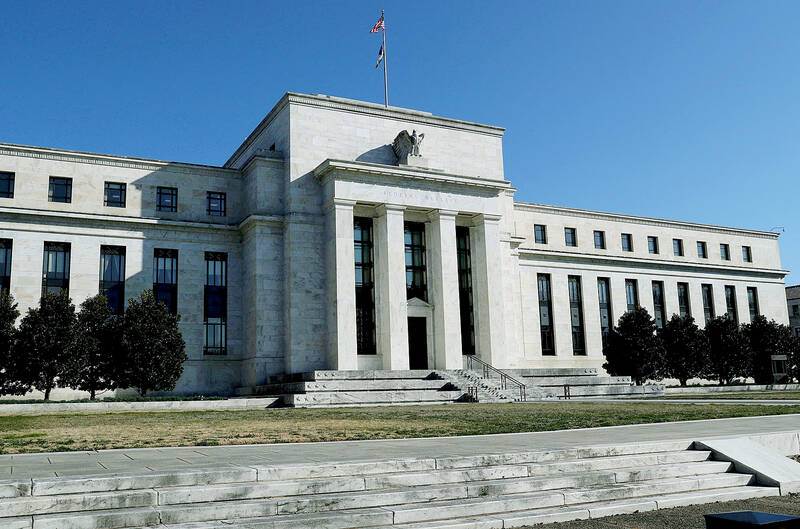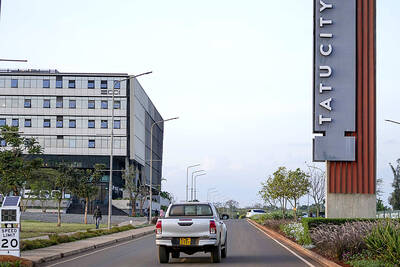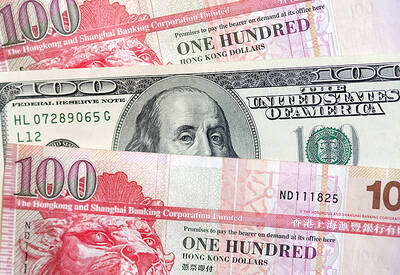The US Federal Reserve has lent US banks nearly US$12 billion under a new one-year lending program unveiled on Sunday, as authorities moved to ease stress on the financial system after Silicon Valley Bank’s (SVB) collapse.
The total outstanding amount of all advances under the Bank Term Funding Program reached US$11.9 billion as of Wednesday, the Fed said in a statement on Thursday.
The Fed had unveiled the scheme alongside the US Department of the Treasury and Federal Deposit Insurance Corp on Sunday night, as authorities looked to prevent other banks from running into the liquidity issues that ultimately doomed California’s SVB.

Photo: Reuters
The new liquidity facility made additional funding available “to help assure banks have the ability to meet the needs of all their depositors,” the statement read.
According to data made available on Thursday, the Fed drew an additional US$152 billion in short-term borrowing for banks from its standing loan window, the traditional liquidity backstop for lenders, a dramatic increase against the roughly US$5 billion from the previous week.
And with the seizure of failed SVB and Signature Bank — a second regional-size lender that collapsed at the weekend — an additional US$142.8 billion was poured into the bridge banks created by regulators for the two collapsed entities, pushing the Fed’s balance sheet up by about US$300 billion in the past week.
US authorities moved swiftly to protect depositors at SVB and Signature Bank, as they saw “serious risk of contagion” that could have triggered runs on many banks, US Secretary of the Treasury Janet Yellen told US senators on Thursday.

To many, Tatu City on the outskirts of Nairobi looks like a success. The first city entirely built by a private company to be operational in east Africa, with about 25,000 people living and working there, it accounts for about two-thirds of all foreign investment in Kenya. Its low-tax status has attracted more than 100 businesses including Heineken, coffee brand Dormans, and the biggest call-center and cold-chain transport firms in the region. However, to some local politicians, Tatu City has looked more like a target for extortion. A parade of governors have demanded land worth millions of dollars in exchange

Hong Kong authorities ramped up sales of the local dollar as the greenback’s slide threatened the foreign-exchange peg. The Hong Kong Monetary Authority (HKMA) sold a record HK$60.5 billion (US$7.8 billion) of the city’s currency, according to an alert sent on its Bloomberg page yesterday in Asia, after it tested the upper end of its trading band. That added to the HK$56.1 billion of sales versus the greenback since Friday. The rapid intervention signals efforts from the city’s authorities to limit the local currency’s moves within its HK$7.75 to HK$7.85 per US dollar trading band. Heavy sales of the local dollar by

Taiwan Semiconductor Manufacturing Co’s (TSMC, 台積電) revenue jumped 48 percent last month, underscoring how electronics firms scrambled to acquire essential components before global tariffs took effect. The main chipmaker for Apple Inc and Nvidia Corp reported monthly sales of NT$349.6 billion (US$11.6 billion). That compares with the average analysts’ estimate for a 38 percent rise in second-quarter revenue. US President Donald Trump’s trade war is prompting economists to retool GDP forecasts worldwide, casting doubt over the outlook for everything from iPhone demand to computing and datacenter construction. However, TSMC — a barometer for global tech spending given its central role in the

An Indonesian animated movie is smashing regional box office records and could be set for wider success as it prepares to open beyond the Southeast Asian archipelago’s silver screens. Jumbo — a film based on the adventures of main character, Don, a large orphaned Indonesian boy facing bullying at school — last month became the highest-grossing Southeast Asian animated film, raking in more than US$8 million. Released at the end of March to coincide with the Eid holidays after the Islamic fasting month of Ramadan, the movie has hit 8 million ticket sales, the third-highest in Indonesian cinema history, Film